
Table of Contents
You’ve secured initial buy-in from leadership for SaaS Management, but keeping their support requires ongoing effort. Executives need to see consistent value—both in terms of cost savings and operational efficiency—to justify continued investment. Without clear, data-backed results, SaaS Management risks becoming just another IT initiative rather than a strategic business priority.
That’s why showcasing cost savings and inefficiencies to executives is a critical step in Phase One of the Enterprise SaaS Management Framework. Simply tracking SaaS usage is not enough; you must translate that data into measurable business impact. Demonstrating how SaaS Management reduces unnecessary spending, streamlines renewals, and eliminates redundant applications reinforces its importance as an enterprise-wide initiative. When executives see direct financial benefits and improved efficiency, they’re far more likely to prioritize SaaS Management.
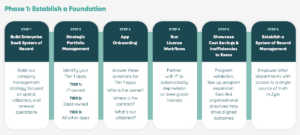
Remember How You Got Executive Buy-In to Begin With
Securing executive buy-in for SaaS Management wasn’t just about presenting numbers—it was about aligning with the company’s larger strategic objectives. The same principles that helped you gain initial approval will keep leadership engaged over time. Cost savings, risk reduction, and operational efficiency are ongoing priorities, not one-time wins. Executives will shift their focus elsewhere if your program stops delivering clear business value.
Why SaaS Management Is More Important Than Ever
A key part of your initial business case for SaaS Management explained the urgency of starting a program.
The rapid expansion of SaaS portfolios has made proactive management a necessity. According to Gartner, SaaS spending continues to grow at a double-digit rate, with global end-user spending expected to reach $299B in 2025. Without a structured approach, organizations risk unchecked costs, redundant applications, and increased security vulnerabilities.

Leaders who prioritize SaaS Management can stay ahead of these challenges. Gartner also notes that by 2027, 50% of organizations using multiple SaaS applications will centralize management to improve efficiency and security. If your organization isn’t actively managing its SaaS ecosystem, it risks falling behind competitors who are leveraging data-driven insights to optimize spend and mitigate risks.
Keep this top of mind throughout your SaaS Management as you report back to executives.
Align with Business Goals, Not Just IT Priorities
Executives don’t invest in SaaS Management for the sake of software oversight. They support it because it helps control costs, improve security, reduce risk, and streamline operations. If those benefits aren’t regularly communicated, SaaS Management can be perceived as an IT-centric function rather than a strategic necessity.
Maintaining alignment with key business goals ensures continued investment and engagement from leadership. Here are some examples:
- Cost reduction – Cut software spending by 5% this year.
- Strengthen security – Reduce the number of risky apps and licenses.
- Enhance the employee experience – Eliminate redundant software to improve collaboration and streamline the software environment.
- Drive more innovation – Invest in the right software and reduce spending to fund innovation initiatives.
- Improve operational efficiency – Use automation to improve workflows.
Keep Your Business Case Fresh
The business case that initially won over executives should evolve as your SaaS Management program matures. What mattered most at the start—whether it was reducing waste, improving governance, or optimizing vendor contracts—should be continuously reinforced with fresh data and insights. Demonstrating progress and uncovering new opportunities for savings strengthens your position when budget discussions arise.
Use Data to Tell a Compelling Story
Data alone doesn’t drive decisions—executives need a clear narrative that connects SaaS insights to business impact. Presenting real-time usage trends, cost reductions, and efficiency gains in a way that resonates with leadership ensures that SaaS Management remains a top priority. The ability to translate metrics into meaningful business outcomes is what keeps executives engaged.
The No-BS SaaS Management Playbook
Learn MoreHow to Ensure Continued Investment in SaaS Management
Securing executive buy-in is only the first step—keeping it requires ongoing validation of your SaaS Management program’s impact. Executives need to see clear results, not just in cost savings but also in improved efficiency and risk reduction. By consistently demonstrating tangible value, addressing inefficiencies, and maintaining a regular reporting cadence, you reinforce the need for continued investment.
Showcase Early Cost Savings
One of the most effective ways to sustain executive support is by proving early cost savings. These quick wins validate the business case for SaaS Management and establish credibility with leadership. Savings often come from streamlining license workflows, proactively managing renewals, and leveraging price benchmarking to optimize contract negotiations.
- License workflows help eliminate wasted spend by identifying unused or underutilized licenses, allowing for deprovisioning or downgrading where necessary.
- Addressing upcoming renewals ensures applications are right-sized to actual usage, consolidated to eliminate redundancy, or removed entirely if no longer needed.
- Price benchmarking provides visibility into market rates, ensuring your organization negotiates the best possible terms.
These cost-saving measures demonstrate a clear financial impact, reinforcing SaaS Management as a strategic investment.
Highlight Inefficiencies
Beyond cost savings, identifying and resolving inefficiencies keeps SaaS Management relevant to business leaders.
Operational inefficiencies, such as a lack of alignment between IT, Procurement, and Finance, can also limit the effectiveness of SaaS Management. Organizations can improve decision-making and reduce administrative overhead by refining cross-functional collaboration and centralizing data. These improvements drive cost savings and make SaaS Management a more valuable function within the business.
Software Purchasing
Many organizations experience fragmented purchasing processes, which result in duplicate spending and redundant applications across departments. Without a structured approach, employees may unknowingly pay for overlapping software or fail to leverage volume discounts.
License Reclamation
License reclamation is often a tedious, manual process without a SaaS Management Platform (SMP). IT and finance teams must sift through spreadsheets, track down inactive users, and manually review renewal contracts—often missing unused licenses hidden across multiple departments.
User Offboarding
Without centralized visibility, companies continue paying for licenses tied to former employees or underutilized tools simply because no automated system flags them. Implementing an SMP streamlines this process by proactively identifying opportunities to reclaim and optimize licenses, ensuring resources aren’t wasted.
Report on Progress Regularly
Demonstrating ongoing value requires consistent communication with executives. A structured reporting cadence ensures leadership remains engaged and informed about key SaaS Management outcomes. Regular updates should include cost savings, risk mitigation efforts, and operational improvements, tying these metrics back to broader company goals.
Articulate Outcomes
Demonstrating value goes beyond high-level reporting—it requires tangible examples that resonate with leadership. Instead of simply stating cost savings, break down the impact:
- If the company aims to save $2 million in SaaS costs this year, highlight incremental progress, such as a $250,000 savings from a successful contract negotiation.
- Showcase $25,000 in savings from rightsizing licenses by downgrading underutilized seats or eliminating unused ones.
- Illustrate how consolidating three redundant project management applications reduced overlapping costs and improved operational efficiency.
By providing specific numbers and real-world examples, executives can see the direct financial impact of SaaS Management efforts, reinforcing its strategic importance.
Use an Executive Dashboard
Dashboards and executive reports should focus on high-level insights that matter to leadership—such as total SaaS spend, optimization progress, and upcoming renewal opportunities. Additionally, highlighting data trends over time reinforces the continued impact of SaaS Management. By establishing a predictable reporting schedule, you create an expectation that SaaS oversight is a necessary, ongoing initiative rather than a one-time effort.
Track SaaS Management Program Results with Zylo
Keeping executives engaged in SaaS Management requires more than occasional updates—it demands continuous visibility into program results. By leveraging real-time dashboards and automated reporting, organizations can ensure leadership remains informed about cost savings, efficiency gains, and risk mitigation efforts. With Zylo’s platform, tracking and communicating the impact of SaaS Management is seamless, making it easier to secure continued investment.
Dashboards
Executives need a clear, high-level view of how SaaS Management supports company objectives. Zylo’s executive dashboards provide real-time insights into key metrics such as total SaaS spend, license utilization, and renewal opportunities. By centralizing data in an intuitive interface, leadership can quickly assess progress without sifting through reports or raw data.
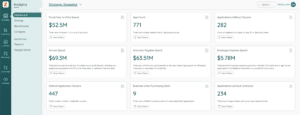
Custom dashboards allow different stakeholders—Finance, IT, Procurement—to focus on the insights most relevant to their role. For example, CFOs may prioritize cost savings and spend trends, while CIOs focus on security risks and governance. By tailoring dashboards to specific audiences, Zylo ensures that decision-makers receive the data they need to support strategic planning and investment decisions.
Automated Alerts & Reports
Compiling reports manually for executives is time-consuming and inefficient. Zylo’s automation capabilities streamline this process by delivering critical insights at the right time. Scheduled reports ensure leadership receives regular updates without waiting for quarterly reviews or ad hoc requests.
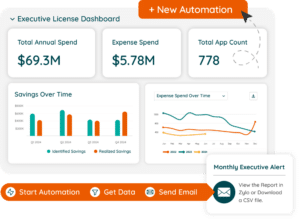
Automated alerts provide proactive notifications on key events, such as upcoming renewals, spend anomalies, or unused licenses you could reclaim. These real-time updates allow executives to make informed decisions quickly, reinforcing the value of SaaS Management in optimizing costs and reducing risk.
Integrating dashboards and automated reporting into your SaaS Management strategy keeps leadership engaged, demonstrates ongoing value, and strengthens the case for continued investment.
Establish Long-Term Commitment to Your SaaS Management Program
To maintain executive investment in SaaS Management, you must consistently demonstrate value, address inefficiencies, and provide leadership with clear, data-driven insights. You can ensure executives see your program’s impact in real time by leveraging Zylo’s dashboards, automated alerts, and reporting tools.
Keep SaaS Management aligned with business objectives, showcase cost savings, and reinforce why continued investment is essential. To learn more on securing buy-in and establishing a foundation of long-term SaaS Management success, check out our No-BS SaaS Management Playbook.
Make SaaS Management a strategic advantage for your organization. Request a demo to see how Zylo can help you optimize your SaaS portfolio and drive measurable business results.

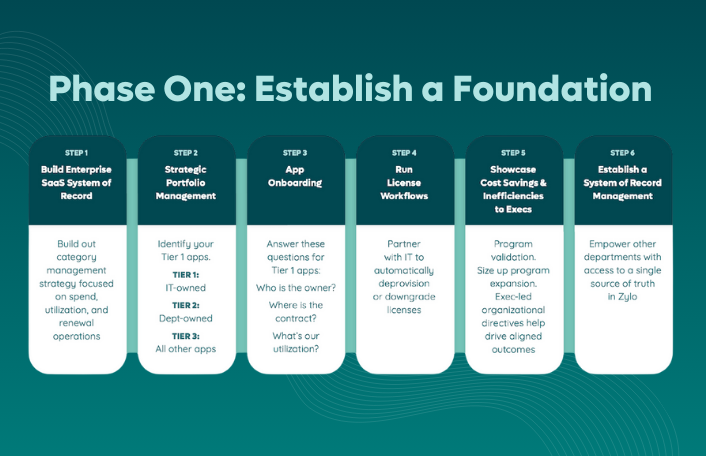
Breaking Down Phase One of the Enterprise SaaS Management Framework
Table of Contents ToggleRemember How You Got Executive Buy-In to Begin...
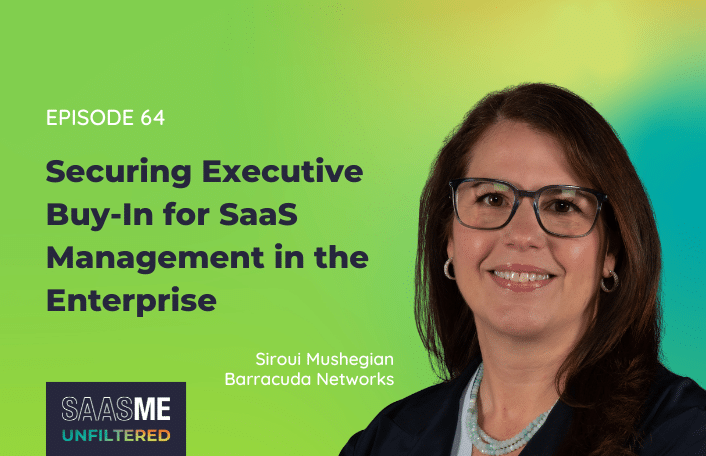
Securing Executive Buy-In for SaaS Management in the Enterprise with Siroui Mushegian…
Table of Contents ToggleEpisode SummaryGuest SpotlightEpisode HighlightsBuild Rapport & Use Data...
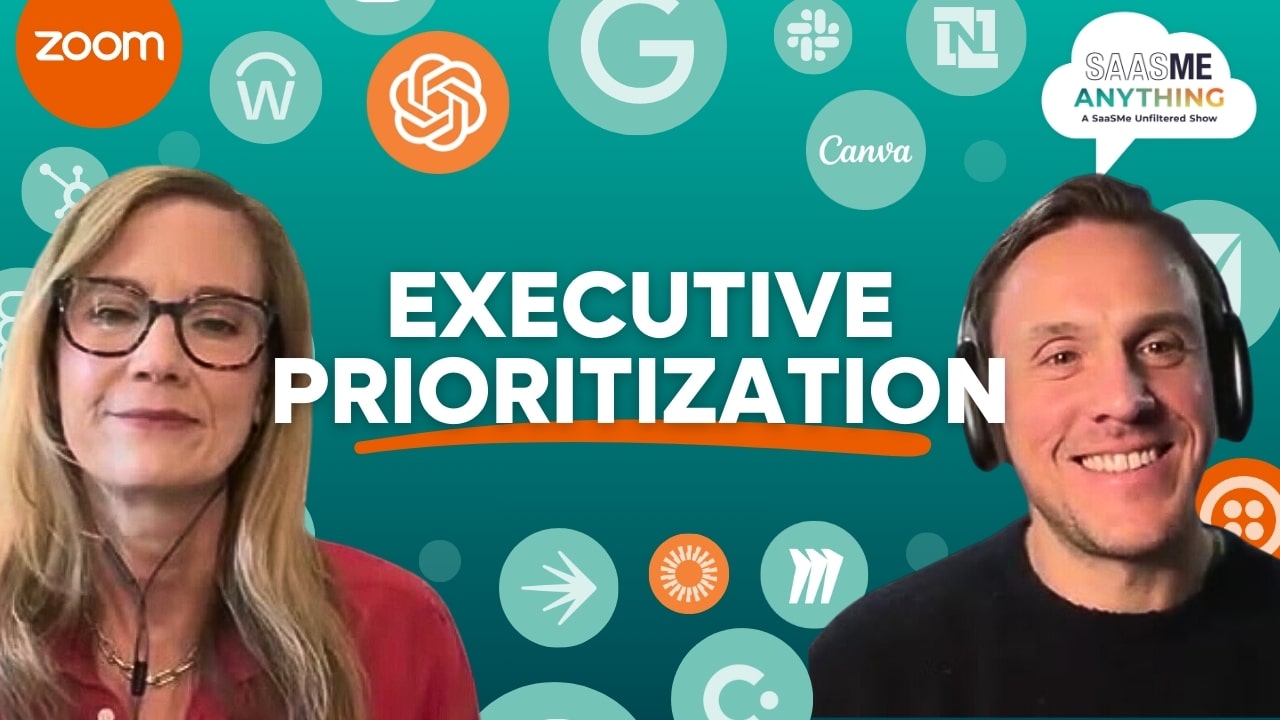
#1 Tip for IT Leaders to Secure Executive Buy-In for SaaS Management
In this episode of SaaSMe Anything, Meredith Albertson sits down with SaaS expert and Zylo co-founder Ben Pippenger to discuss the importance of executive and organizational buy-in for successful SaaS Management. They explore the consequences of lacking this buy-in, strategies for IT leaders to gain support, and key metrics to include in a business case for starting a SaaS Management program.
Chapters
- 00:00 Introduction
- 01:11 The importance of executive and organizational buy-in for SaaS Management
- 02:25 What happens if you don’t get executive and organizational buy-in
- 03:23 The number one thing IT leaders should do to get buy-in
- 07:28 Conclusion and what to expect in the next episode
To learn more about getting executive buy-in for SaaS Management and other aspects of building a program, check out The Definitive Guide for SaaS Management: https://zylo.com/reports/the-definitive-guide-to-saas-management/

